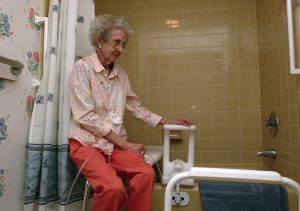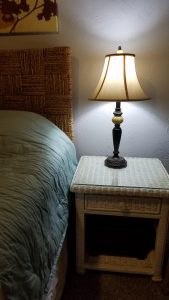According to the Centers for Disease Control and Prevention (CDC), falls by older adults aged 65 and up can often result in serious injuries, decreased mobility and a loss of independence. They are common and can happen at a high cost, both financially and in terms of health and lifestyle for the person who falls. Statistics from the CDC show “each year, 3 million older people are treated in emergency departments for fall injuries” and the death rate from falls in the U.S. has been on the rise—30% from 2007 to 2016.
While many falls don’t cause injuries, some do and can leave the person with bruises, sprains, broken bones or head injuries. Even if a person falls without suffering an injury, that fall may lead to a fear of falling. Both the injuries and the fear of falling can lead a person to limit their daily activities. By being less active, the person increases their risk of falling again.
It’s not all bad news though. Many falls are preventable and several of the steps you can take for yourself or a loved one are low or no cost. Start by looking for risk factors. These are conditions that increase the chances of a fall happening. Here are some to be aware of:
- Taking more than 2 medications daily.
- Having a hearing and/or vision impairment.
- Experiencing dizziness when getting up, changing positions, or walking.
- Having trouble getting in and out of a chair, walking, picking up objects from the floor or reaching overhead without holding on to something.
- Having throw rugs, cluttered walkways, uneven surfaces or slippery floors.
- Navigating stairs without rails.
- Having poor lighting conditions.
- Wearing shoes with high heels or slippery soles.
- Having fallen in the past year or being afraid of falling.
Many of these can be corrected or managed. One of the key steps to preventing falls is talking with your doctor and pharmacist. They can help with evaluating your risk and advise you on specific things you can do, especially in terms of problems with hearing, vision or medications. Staying active or following exercise routines can help with balance and strength. Here is a link to some beginner level exercises to start with if you’re not already exercising.

An elderly persons bathroom can be made safer by adding items that will help them maneuver easier. Photo Credit: UF/IFAS Marisol Amador
Do a check of your home to see if you have any of the risk factors above and correct them. Here are some other steps you can take at home:

Keeping a lamp beside the bed means you don’t have to walk through the dark at night to get to the light switch. Photo credit: Terri Keith, UF/IFAS Extension
- Lower shelves 3 inches for easier access; adjust closet rods to keep clothes within reach.
- Use a reacher or grabber for items that are too high. NEVER use a chair as a step stool.
- Install or add more lighting in your home especially near walkways, stairs and entrances.
- Keep a lamp and flashlight by your bed and night lights where needed.
- Install or secure handrails on both sides of the stairs and use them every time.
- Make sure walkways are clear and uncluttered. Remove or secure throw rugs, cords and hoses out of the way.
- Use textured surfaces for patios, driveways and stairs. Mark any changes in floor level with reflective tape.
- Be aware of your pet’s location when you stand or walk so they don’t trip you.
- Install and use grab bars to help with getting in and out of the bath safely.
- Use a rubber mat in your bathtub or shower.
- Install a handheld showerhead and use it with a bath bench or chair when showering.
If a fall does happen, even if there were no injuries, it’s a good idea to let your doctor know about it the next time you see them. It can help alert them to new medical problems or a need to review your prescriptions. Taking these steps can help reduce the risk of a fall and stop the cycle of falling from being repeated.
Resources:
Centers for Disease Control and Prevention, Home and Recreational Safety: https://www.cdc.gov/homeandrecreationalsafety/falls/index.html and https://www.cdc.gov/homeandrecreationalsafety/falls/adultfalls.html
University of Florida, IFAS: https://edis.ifas.ufl.edu/fy734 and https://edis.ifas.ufl.edu/fy733
National Institute on Aging: https://www.nia.nih.gov/health/prevent-falls-and-fractures and https://www.nia.nih.gov/health/fall-proofing-your-home
- Are You Considering Homeownership? - May 24, 2024
- February is National Canned Food Month - February 21, 2021
- If Your New Year’s Resolution is to Eat Healthier, Do You Know Where to Start? - January 14, 2021
